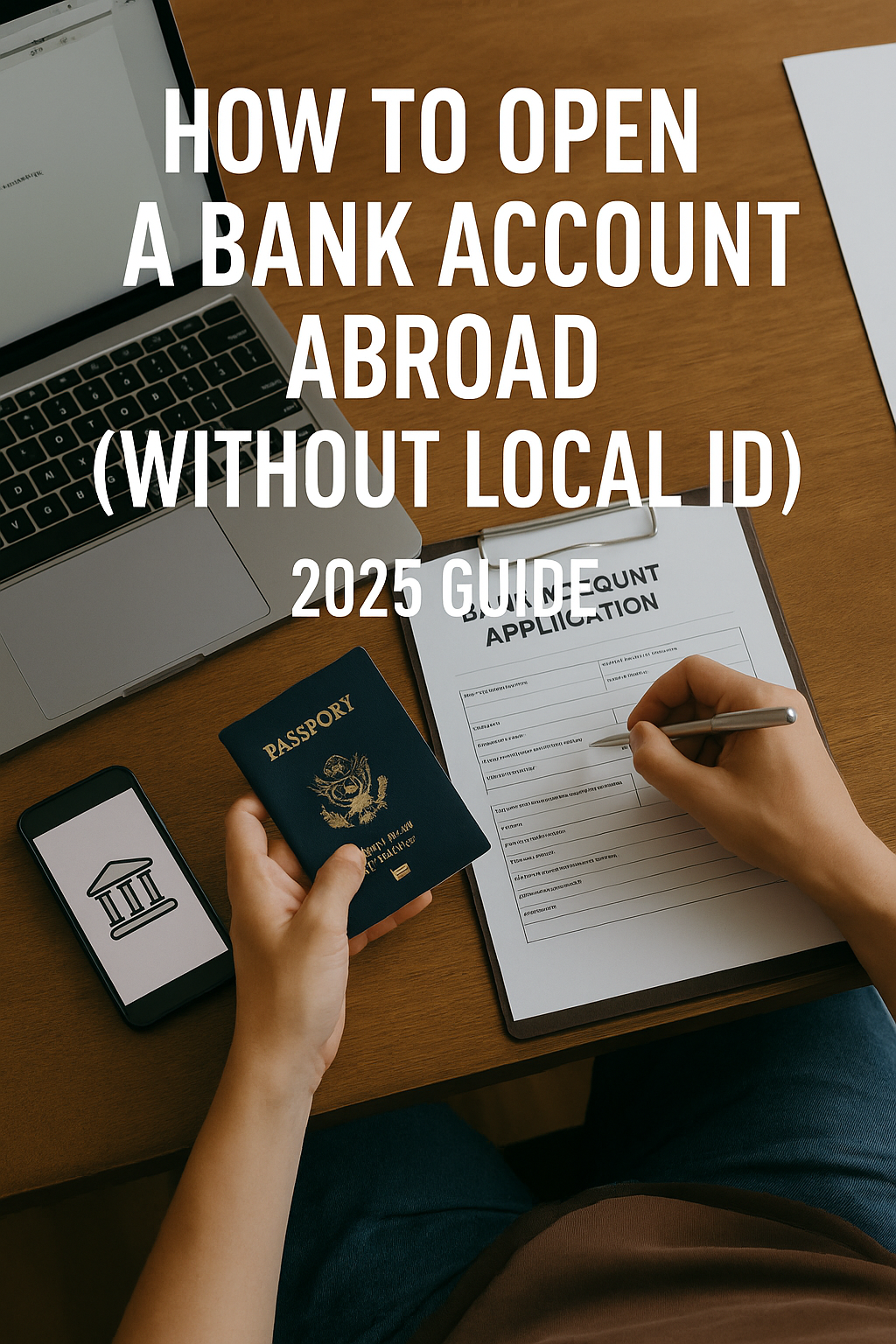A Practical Guide for Expats, Digital Nomads, and International Students
Opening a bank account in a foreign country without local identification can feel like hitting a brick wall. Most traditional banks require proof of residence, national ID cards, or even local utility bills to get started. But what if you don’t have any of that?
Whether you’re a digital nomad just landing in Thailand, an international student in Korea, or a freelancer moving between countries, you need access to local banking—even if you don’t yet have legal residency or a government-issued ID.
In this guide, we’ll walk you through real ways to open a foreign bank account (or something very close to it) without a local ID, using smart workarounds, digital banks, and fintech alternatives.
Why Having a Local Bank Account Matters
A local bank account is critical for:
- Receiving income or remittances
- Paying rent and bills
- Avoiding foreign transaction fees
- Building local credit
- Accessing local online services
Without it, you’re stuck using foreign cards, incurring endless FX fees and limitations.
1. Use Fintech Banks That Don’t Require Local ID
Many digital-only banks, also known as “neobanks,” are making it possible to open international accounts with just a passport and address—no local ID required.
Recommended Global Fintech Options:
Wise (Multi-Currency Account)
- Hold and send money in 40+ currencies
- Get local bank details in USD, EUR, GBP, AUD
- Only passport and email required
- Debit card available for spending
Use Case:
A South African traveler in Spain opens a Wise account using just their passport. They receive EUR bank details to receive payments and spend locally using their Wise debit card.
Revolut
- Open in minutes with passport and selfie
- Multi-currency wallet
- Available in EEA, US, Singapore, Japan, Australia
- Free FX within monthly limits
Use Case:
A Canadian remote worker in Portugal uses Revolut to receive payments in USD, convert to EUR instantly, and spend via Apple Pay—all without a Portuguese ID.
Payoneer
- Especially useful for freelancers
- Receive payments in multiple currencies
- Connects to marketplaces like Fiverr, Airbnb
- Withdraw to local ATMs (fees may apply)
2. Use a “Partner Address” and International Passport
Some traditional banks in certain countries may allow you to open an account if you can provide:
- A valid passport
- A local mailing address (friend or hostel)
- A phone number (can be local or roaming)
While this method isn’t always officially allowed, it does work in practice in countries like:
- Mexico
- Germany (some Sparkasse branches)
- Vietnam
- Georgia (TBC Bank is very foreigner-friendly)
3. Use Student or Work Visa to Your Advantage
If you have a student visa or work permit, even without a local ID card yet, many banks will accept:
- Proof of enrollment or employment
- Passport
- Temporary visa
- Housing lease or local bill
Examples:
- South Korea: Woori and KB banks accept passports + visa + housing contract
- Germany: Deutsche Bank allows blocked account setup before arrival
- Japan: Shinsei Bank offers “GoRemit” accounts with passport + residence card pending
4. Ask About “Non-Resident Accounts”
Some banks offer specific accounts for non-residents, often used by tourists, seasonal workers, or business travelers.
These accounts may have:
- Limited functionality (no credit, no local transfers)
- Higher minimum balances
- No debit card (sometimes)
But they still allow local bank transfers, ATM withdrawals, and online bill payments.
Examples of countries with non-resident options:
- Panama
- UAE (especially Dubai)
- Singapore
- Philippines
5. Combine a Digital Bank + Local Wallet for Full Coverage
If opening a full local account isn’t possible, combine services:
- Wise or Revolut for receiving & spending
- KakaoBank (Korea), GCash (Philippines), or LINE Pay (Japan) as local wallets
- Payoneer for receiving international business income
- ATM withdrawals using foreign cards with low FX fees (Curve, Charles Schwab)
Pro Tips for Success
Use a VPN if signup geo-restricted
Set up a virtual local address (Earth Class Mail, UK Postbox)
Buy a local SIM card early (required for SMS authentication)
Translate required documents (bank might need English versions)
Always carry your passport when visiting a bank branch
Real-World Scenario:
“How I Opened a Thai Bank Account Without Thai ID”
Sophie, a digital nomad from Canada, landed in Chiang Mai. She visited a Bangkok Bank branch with her passport, Thai phone number, and Airbnb address. Though the bank’s website said local ID was required, the staff allowed her to open a basic account with a savings book and ATM card.
Lesson? Politeness, persistence, and preparation matter.
Final Thoughts
Opening a bank account abroad without local ID isn’t always easy, but it’s far from impossible in 2025. With the rise of neobanks, borderless finance, and alternative identity verification, you now have more tools than ever.
You don’t have to wait for a residency card or jump through endless bureaucratic hoops.
Instead, use the right combination of digital services, passport-only options, and smart strategies to unlock financial freedom from day one.
